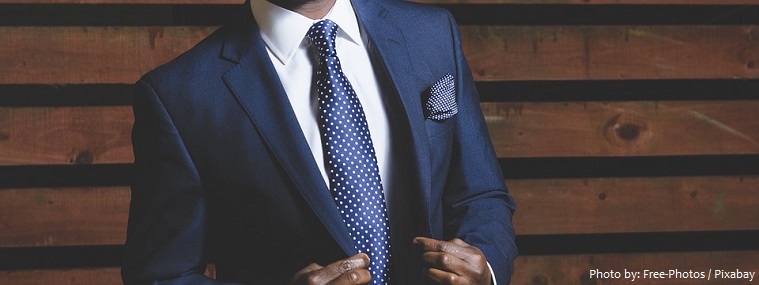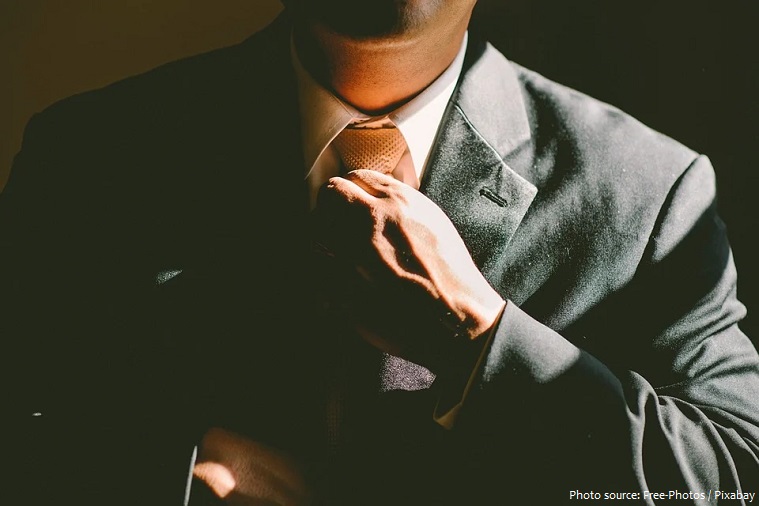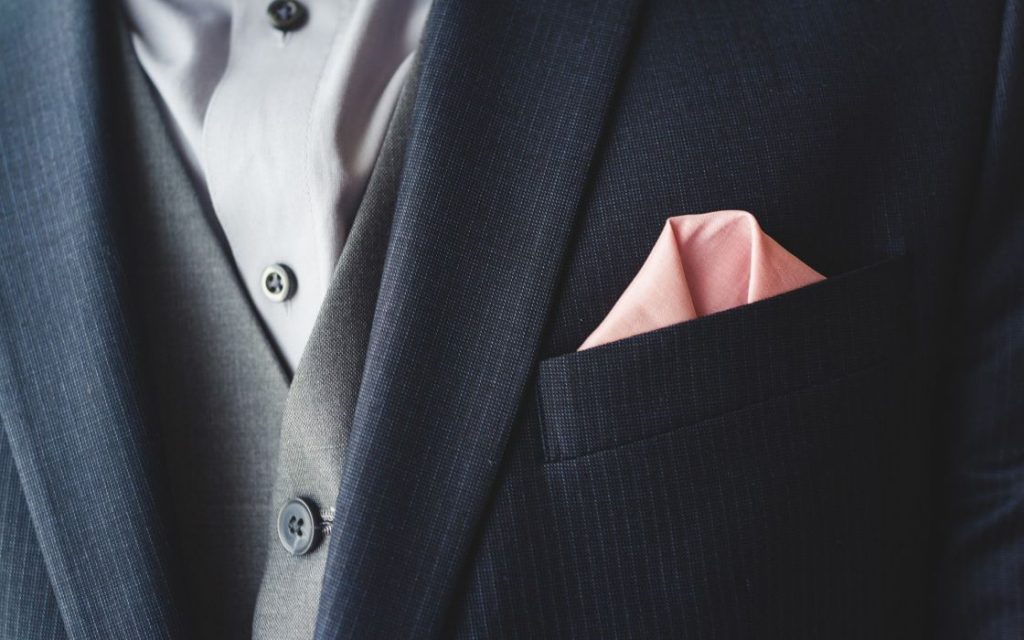
The suit is a traditional form of men’s formal clothes in the Western world.
It is a set of clothes comprising a suit jacket, or coat, and trousers.
Suits are offered in different designs and constructions. Cut, and cloth, whether two- or three-piece, single- or double-breasted, vary, in addition to various accessories. A two-piece suit has a jacket and trousers, a three-piece suit adds a waistcoat (known as a vest in North America).

When of identical textile, and worn with a collared dress shirt, necktie, and dress shoes, it was traditionally considered informal wear in Western dress codes.
The word “suit” derives from the French suite, meaning “following”, from some Late Latin derivative form of the Latin verb sequor = “I follow”, because the component garments (jacket and trousers and waistcoat)
follow each other and have the same cloth and colour and are worn together.
For some four hundred years, suits of matching coat, trousers, and waistcoat have been in and out of fashion.

The modern lounge suit’s derivation is visible in the outline of the brightly coloured, elaborately crafted royal court dress of the 17th century (suit, wig, knee breeches), which was shed because of the French Revolution. This evolution is seen more recently in British tailoring’s use of steam and padding in moulding woolen cloth, the rise and fall in popularity of the necktie, and the gradual disuse of waistcoats and hats in the last fifty years.
The shift in Western masculine attire from the doublet to the present-day suit began in the 1660s at the courts of Louis XIV of France and Charles II of England. The reformed style consisted of a long coat with wide, turned-back sleeves and a row of buttons down the front, some of which were left unbuttoned to reveal a vest (later called a waistcoat in England), an undergarment almost identical to the coat.

Brooks Brothers is generally credited with first offering the “ready-to-wear” suit, a suit which was sold already manufactured and sized, ready to be tailored.
By the mid-1800s, we saw the introduction of the frock coat for everyday wear and the morning coat for formal day wear. This was also around the time that the dinner jacket came into existence to be worn at the most formal of formal events. You and I know that this later became the good old tuxedo once it hit the states.
At the beginning of the 20th century, the frock coat’s popularity took a nosedive, an occurrence that we are ever thankful for, and the morning coat became standard business attire. By the 1920s, suits were the
most common form of clothing worn by men. But it wasn’t a world of coattails and cravats, those were reserved for formal events and the gentry. The common man made do with the short jacket suit that we have come to love so well.

By the 1930s, suits had become loose fitting and baggier than we now prefer, a style that persisted for two decades and a time that is best forgotten considering that it coincided with the war.
It was Haggar Clothing that first introduced the concept of suit separates in the US, the concept of separately sold jackets and trousers, which are widely found in the marketplace today.
The 1960’s brought men the skinny fit suits, drainpipe trousers cut short at the ankles and collarless jackets (think of The Beatles). 60’s were also bringing polo-neck sweaters worn with a suit often replaced the shirt-and-tie combo. But 1970’s are called the worst suit era ever. Its the era of flairs and colours.The famous era of the flower power!

The 1980s saw a trend towards the simplification of the suit once again and in the late 1990s saw the return to popularity of the three-button two-piece suit, which then went back out of fashion some time in the first decade of the twenty-first century.
In the 2000’s – suits were out of fashion (except for formal occasions). But from 2010 we are back to basics! Popular styles are indie and retro (think of James Bond). Slim fit came back. We are back to taking trends from the cinema- and now TV (Mad Men).
The most valuable suit is a £70,000 ($113,000) creation by Alexander Amosu (UK). Made from gold thread, Himalayan Pashmina, Qiviuk and Vicuña it took over 80 hours and over 5,000 stitches to create. It is finished with nine 18-carat gold and diamond buttons.
The oldest-surviving wedding suit comprises the coat and breeches worn by the Duke of York (later King James II) at his wedding to Mary of Modena on 21 November 1673 in Dover, Kent, UK. The suit, which was 348 years old as of 2021, is housed in the British Galleries of the Victoria & Albert Museum in London, UK.
The largest suit measures 19.5 m (63 ft 11.71 in) in height from shoulder to trouser hem and was created by Raymond Ltd. (India) at their factory in Mumbai, India, on 7 March 2001.
